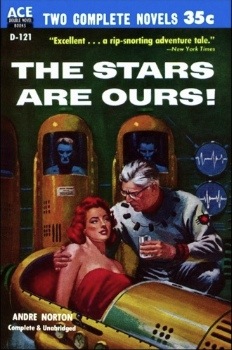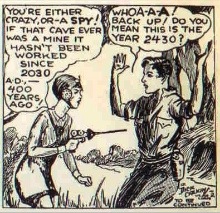Advancements in Suspended Animation
Posted by Andrew on October 15th, 2009 A staple of science fiction is the suspended animation chamber. It’s how we send astronauts to faraway places, punish criminals (we’re not quite clear on how sending bad guys into the future where they can expect longer, healthier lives and really cool technology is punishment) and sending our heroes forward in time.
A staple of science fiction is the suspended animation chamber. It’s how we send astronauts to faraway places, punish criminals (we’re not quite clear on how sending bad guys into the future where they can expect longer, healthier lives and really cool technology is punishment) and sending our heroes forward in time.
The development of this technology has taken researchers down different paths from just plain freezing people to drug cocktails.
One of the more promising innovations in the search for suspended animation is the discovery that certain poisonous gases at low levels can actually slow down the metabolism without killing the organism. CNN.com has an interesting report from the lab of biologist Mark Roth at the Fred Hutchinson Research Center:
She turns a dial, and the sealed enclosure starts to fill with poison gas — hydrogen sulfide. An ounce could kill dozens of people.
The rat sniffs the air a few times, and within a minute, his naturally twitchy movements are almost still. On a monitor that shows his rate of breathing, the lines look like a steep mountain slope, going down.
At first glance, that looks bad. We need oxygen to live. If you don’t get it for several minutes — for example, if you suffer cardiac arrest or a bad gunshot wound — you die. But something else is going on inside this rat. He isn’t dead, isn’t dying. The reason why, some people think, is the future of emergency medicine.
We won’t ruin it for you, but the rat turns out okay.
 His pioneering research got him a MacArthur prize which then lead to 600 million in venture capital funding. The military is looking into his technology as a way to save lives on the battlefield.
His pioneering research got him a MacArthur prize which then lead to 600 million in venture capital funding. The military is looking into his technology as a way to save lives on the battlefield.
Right now the biggest hurdle is dealing with larger mammals. The process works on rats allowing them to slow their respiration to 10% of normal with no apparent cell damage. Scaling up to humans is a challenge.
 This is fascinating research but the article fails to give due credit to the pioneer of this kind of suspended animation, Buck Rogers. It was while exploring an abandoned mine that he came in contact with a poisonous gas that put him in suspended animation for 500 years.
This is fascinating research but the article fails to give due credit to the pioneer of this kind of suspended animation, Buck Rogers. It was while exploring an abandoned mine that he came in contact with a poisonous gas that put him in suspended animation for 500 years.
link: Scientists hope work with poison gas can be a lifesaver – CNN.com
link: Metabolic Flexibility and Suspended Animation
link: Suspended animation – Wikipedia, the free encyclopedia